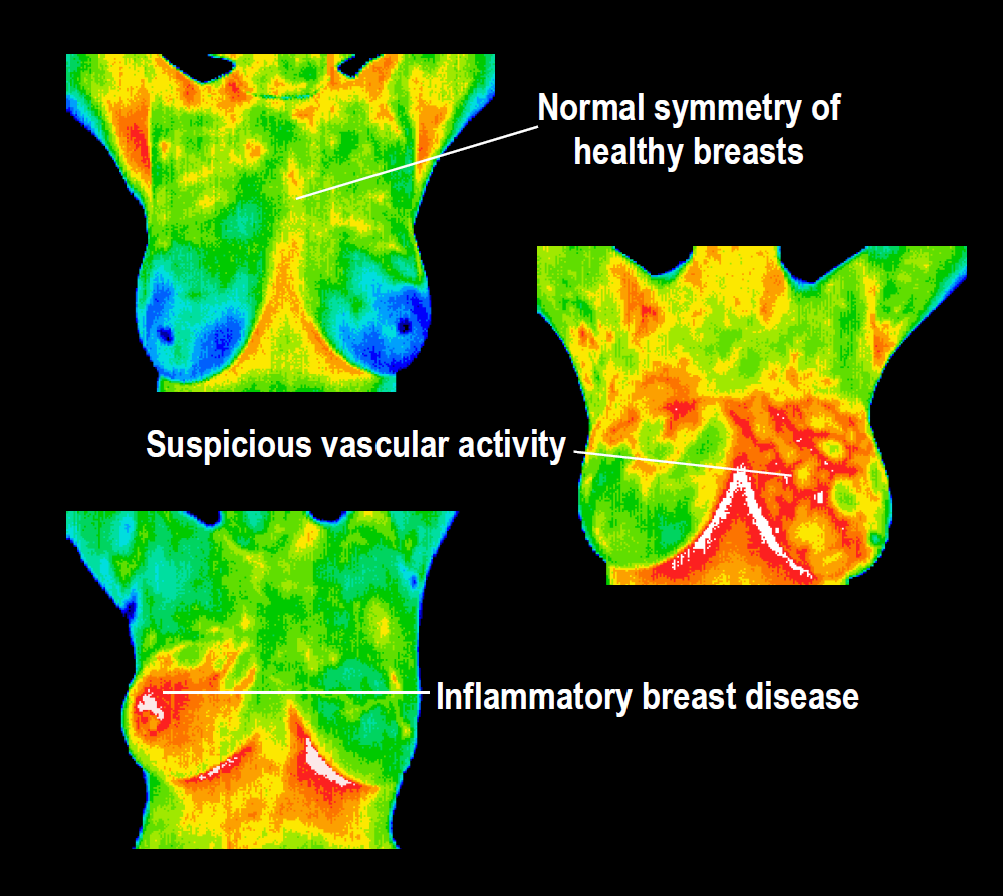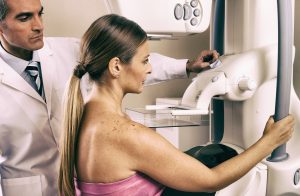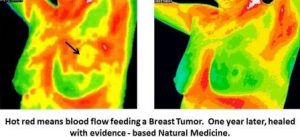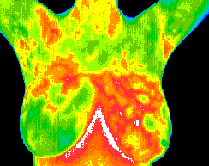
Author: Dr. Veronique Desaulniers, better known as Dr. V, is a Doctor of Chiropractic & has 44 years of experience in the wellness industry. For personalized support, please partner with a trained Breast Cancer Conqueror Coach.
I have renamed “Pink Month” to BHAM—Breast Health Awareness Month. BHAM! is a chance to speed up your education around what you can do to help your body be the best it can be, protect yourself from breast cancer, and live a vibrant, healthy life! Perhaps the most important thing you can do for your breast health this month is to learn about safe avenues for early detection like breast thermography.
Mammography Facts

As most of you know, I am a strong advocate of thermography for very early detection of breast dis-ease. But should thermography be used in lieu of mammography? I am asked this question a lot by coaching clients and audience members in presentations I give throughout the country. The path toward breast health is a personal one. My answer is always to educate yourself on all detection modalities and then let the facts and your own inner guidance help you decide.
That being said, here are some facts about mammography you should know:
-A 25-year-long study on 90,000 Canadian women found that “annual mammography in women aged 40 to 59 does not reduce mortality from Breast Cancer beyond that of a physical examination.”
– The over-abundance of false positives (and the number of unnecessary biopsies that result from them) was the catalyst for a major change of policy regarding mammograms put out by the American Cancer Society in 2015.
-The low-energy X-rays used in mammography are four to six times more damaging to cells than higher X-rays. They can cause DNA damage which may increase the risk of Breast Cancer, according to the British Journal of Radiology.
-A 2017 meta-analysis of current research concluded that “exposure to ionizing radiation, from both military and medical sources, is the best-known and longest-established environmental cause of breast cancer in both women and men.”
-The poking, prodding, and squishing that is involved in a mammography exam are not only uncomfortable but may rupture small tumors if they exist, causing cancer cells to spread throughout the body.
-By the time a cancer is detected in the breast through mammography, a patient may have had tumor growth for up to 8 years.
What About Thermography?
Thermography or DITI (Digital Infrared Thermographic Imaging) is safe, non-invasive, and can detect physiological changes in sensitive mammary tissue many years before they show up on a mammography x-ray.
Is thermography 100% accurate all of the time? Of course not—no test can claim to do that! However, according to a 2008 study conducted by New York Presbyterian Hospital at Cornell, thermography had a 97% success rate at detecting abnormalities!
had a 97% success rate at detecting abnormalities!
How does thermography work? The process of getting a thermography exam involves no touching, poking, compression or radiation. It does involve sensitive equipment, cameras, and software that are safe and designed to read infrared heat being emitted by the body tissue. Increased heat in any given area indicates areas of inflammation and/or hormone imbalances. There is increasing evidence that connects high levels of inflammation to the development of cancer in the body.
Regular thermography exams can be extremely beneficial as a complementary tool for your early detection goals because they can detect possible tumor growth when it is in the “non-palpable” stage. According to radiologist Dr. P. Gamagami, MD, and others, “angiogenesis is present in more than 90% of non-palpable tumors and 100% of palpable lesions.” A palpable lesion is a tumor that can be touched or felt while angiogenesis indicates the formation of new blood vessels that are feeding a tumor.
 Modalities such as thermography that can detect possible tumor growth at the non-palpable stage are especially important for very early detection. Whether you decide to get mammograms or not, it just makes sense to add thermography to your healthy breast journey this month and regularly throughout your life, since it is considered the “gold standard” of alternative testing methods.
Modalities such as thermography that can detect possible tumor growth at the non-palpable stage are especially important for very early detection. Whether you decide to get mammograms or not, it just makes sense to add thermography to your healthy breast journey this month and regularly throughout your life, since it is considered the “gold standard” of alternative testing methods.
If you want to give thermography a try for your health and breast cancer prevention, be sure to connect with a certified thermography company that is also a member of the American College of Clinical Thermography. Your thermograms are read by trained medical doctors that are “Thermographists”, very similar to a medical doctor who is trained as a radiologist. The report is then sent to you, along with the images.
Digital Infrared Thermographic Imaging has been part of my life personally and professionally since 2005. I have confidence that once you investigate this modality you will add it to your “true early detection” protocol.

I doubt my health insurance will pay for this or if there are any doctors in my area that offer this testing. How can I find out if there are doctors in mid Delaware that offer this type of testing instead of Mammograms?
Hi Geneva,
Use this link to find a thermography clinic in your area:
http://thermologyonline.org/Breast/breast_thermography_clinics.htm
Wat are the costs?
The cost of thermography depends on the thermographer that you use! Use this link to find one in your area: http://thermologyonline.org/Breast/breast_thermography_clinics.htm
My Thermography interpreter is trained through the International Thermographic Society and achieved Diplomate level certification through the American Board of Clinical Thermography (ABCT). He also attained Diplomate certification through the International Academy of Clinical Thermology (IACT)….but he is not listed on the ACCT website….is that dependable? My results were consistent at first when a malignant tumor was found in my left breast by ultrasound and my left breast was considered a medium risk in the thermography reports for 2 yrs…….now I’m a little confused as my thermography report has gotten a little worse (on the left side, my right has gone from good to better) yet my ultrasound last week showed the tumor is now gone after 6 months of a strict diet and protocol at the hoxsey clinic in Mexico. Any input???
Hi Gina – I would recommend discussing the results with your thermographer to see what their interpretation is. A thermography is not a diagnostic tool, but can be supportive when looking at the big picture with other test results. It also looks at inflammation and vascularity, not necessarily tumor size. You can also consider an Ivy Gene test and other cancer markers to track the progress as well to give a more complete picture.